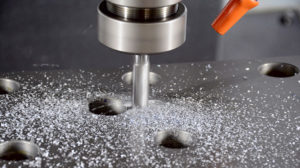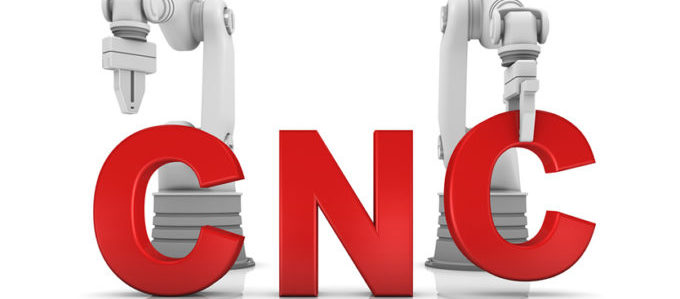The profit you see on a product is only defined in the most immediate sense by its end sales numbers. In reality, your overall profit — gross revenue minus the cost of producing your product — is affected at numerous steps along the manufacturing process, and one smart way to better your bottom line is to start thinking about lowering production costs from the very outset, during the design process.
One of the most effective ways to reduce your cost of manufacturing is to understand the specifics of the CNC machining process, and how you can tailor your product design to take advantage of those specifics, resulting in lower costs. Creating a design that’s highly compatible with the CNC machining process means less machine work and thus less time to produce your parts, which translates to a lower cost of CNC machining for you.
Let’s examine some of the aspects of CNC machining that you can incorporate into your part design and get a head start on maximizing your profits.
1. Keep it simple. A rule of thumb that’s repeated over and over, regardless of the task at hand — and for good reason: it works. In the case of CNC machining, it’s an easy equation: the simpler the part, the less machining required — which, again, means lower costs. “Simple” is relative, but the philosophy can still be applied even to more complex parts. Just remember to design your part only as much as is required to carry out its core function. “Nice to haves” and other embellishments can and should be omitted, a decision that becomes easier when you put pen to paper and calculate the added value to the customer and to you as related to the costs of development.
2. Use standard measurements. Researching or inquiring with your supplier about the standard measurements of its machining equipment can play a huge role in making your part easier to manufacture and thus less expensive. Here’s a quick sample of measurements to consider:
- • End mill dimensions. One-fourth inch is a typical measurement, and designing corners and other milled part features with a bit of extra space lets the machine run continuously, resulting in less production time.
- • Drill bit dimensions. It’s usually safe to assume that a machine shop will have drill bits in standard fractional measurements, like 1/8 inch, ¼ inch, 1/32 inch and so on. Designing any tapped holes in a part to match up with these dimensions makes them much easier to carry out in one step.
- • Raw material sizes. If you’re able to design your part to align with the dimensions of the raw stock available, you should do so. You might also be able to use those measurements to reduce wasted material that you’d still be paying for.
3. Round your corners. As with the advice about end mill dimensions above, rounded corners also enable a machine to run more continuously, reducing part positioning time. Ninety-degree corners require the machine to stop and the part to be rotated in order to continue the machining process, while rounded corners do not.
4. Think about ratios. Parts with irregular or extreme width-to-depth ratios can be much more difficult to machine and are more prone to part breakage as well as tool breakage. A good rule of thumb is keeping your part’s width to no more than three times the depth.

5. Understand your supplier. While you’ll almost always get a better rate as your production run increases, mass production is not always what you’ll require. With inventory space always at a premium and the benefits of lean production ever more apparent, shorter, more targeted runs are never out of the question. You may also choose CNC machining for prototypes for new products. In these cases, it’s important to research a supplier specializing in such quantities. The supplier will be much more receptive to short or mid-sized runs, with the pricing to match.
6. Choose your materials wisely. Unsurprisingly, softer metals are easier to machine than harder ones. Be sure to carefully consider the strength requirements of your product so that you do not needlessly choose a material that is harder than necessary — it will require more machining passes, different tooling, and a host of other resource and cost expenditures that you can save on. Also, be sure to consider building strength considerations into your design (as with, for instance, thicker walls on a part) rather than relying on the qualities of the material — that solution will often be the less expensive one.

7. Let the machine do what it does best. Several of the above ideas feed into this concept, but it’s also beneficial to remember it as a whole: CNC machining is a versatile and exceedingly useful technology, but it (like any other process) has its limitations. Essentially, you don’t want to “fight the machine” — whether in design elements, tolerances or other aspects — to have your part produced. The more complex, unconventional or generally difficult your part or design, the more time it will take to produce, with the attendant potential for additional complications during that time. Think of the CNC machine almost as a “design partner” of sorts, incorporating its strengths and abilities into your product. And if you find that you still can’t, read on to our next step.
8. Don’t count out other processes. Whether for design, cost or production capacity reasons, sometimes CNC machining might not be the right choice for a particular job. If you’re feeling constricted in the process, or if the numbers just don’t seem to be working out, it never hurts to look into other processes that might be better suited to your job. Three-dimensional printing or other technologies might be able to provide the results you need at a more viable price point.
Keeping these points in mind during your design process will let you achieve higher levels of manufacturability — a key part of keeping your production costs low and increasing your bottom line. The more you know about the process itself, the better equipped you are to design to its strengths, so don’t stop here — learn as much as you can about CNC machining.



